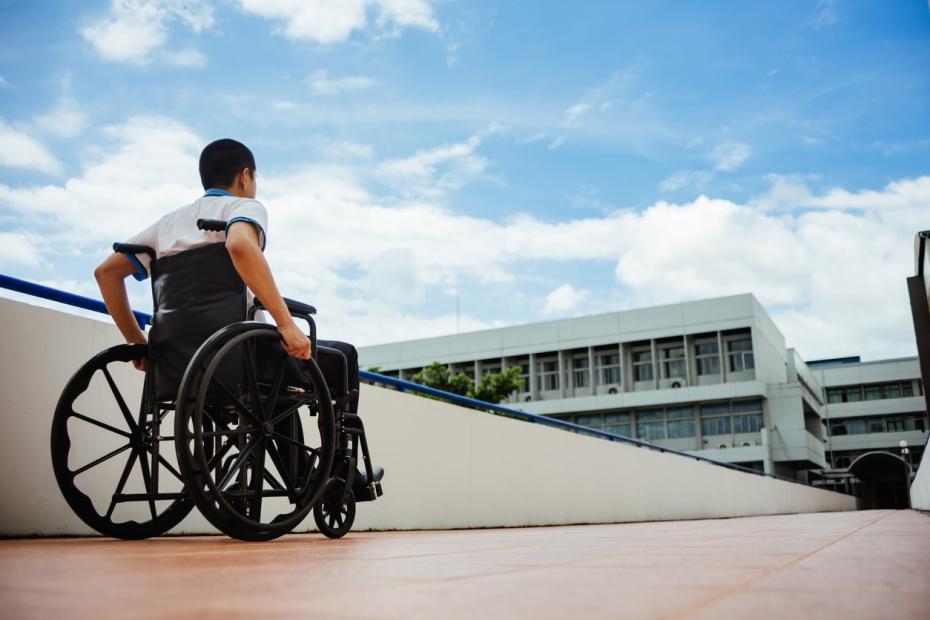Equity, diversity and inclusion (EDI) work in higher education has reached a pivotal moment. Attacks on EDI in many parts of the world – most notably the US, under the Trump administration – have raised questions about how best to advance the basic aim of EDI, equality of opportunity for all, in ways that bring people together.
As many in this guide explain, hostility to efforts to create fairer, inclusive and diverse institutions of higher education runs a lot deeper than the latest US presidential agenda and it cannot be ignored and rejected as a momentary political spike. Yet the continued need for EDI (or DEI as it is called in America) work to address historic and systemic injustice is clear from the data. In the US, Black, Hispanic, Latino, Native American and Pacific Islander people are under-represented in university student and staff populations. Students from these groups also have worse academic outcomes.
In the UK, only 1 per cent of professors are Black, women remain under-represented on the higher rungs of the academic ladder and the attainment gap between students from minoritised backgrounds and their white counterparts remains stubbornly evident across the higher education sector.
While not all EDI work has proved successful, significant progress has been made on widening participation in higher education and building more inclusive universities in which students and academics can thrive. With EDI now under such scrutiny and, in some cases, outright assault, how can academics and university staff continue to champion and work for a fairer, meritocratic system in which everyone can flourish without fuelling further division and opposition?
This guide shares lessons from academics on navigating increasingly choppy waters relating to EDI, addressing misconceptions about the work and its core ambitions, strategies for allyship, anti-racism and inclusion and how to champion EDI through your teaching and institutional culture.
What to do when EDI comes under attack
A vital component of higher education for the past two decades, EDI has long had its critics. Practices aimed at dismantling barriers and disadvantages affecting certain groups have given rise to misunderstanding and debates about advantage and fairness. But what was once “anti-woke” rhetoric has now evolved into legislation. The ruling against affirmative action in the US in 2023 was the first major shockwave. Trump’s second inauguration has been followed by a slew of executive orders aimed at dismantling EDI, the impact of which is being felt around the world. Universities are now grappling with how to address inequality within fast-moving parameters. Here, EDI experts offer guidance on how to stand firm amid the mounting challenges.
‘There is no workaround to this moment – we are all targets’: The attacks on EDI and academic freedom show that universities needs to come together, build collaborations and stand firm. Mike Gavin at Delta College explains how.
EDI is meritocracy – why is that hard to understand?: Equity, diversity and inclusion is misunderstood when it is seen as valuing identity instead of skill within the systems that determine academic career progression. But it is in the sector’s interest to recognise and support talent, no matter what it looks like, writes Brooke Szücs from the University of Queensland.
Faculty must stand together to confront the American illiberal peril: What happens now that university presidents are willing to stand up individually and collectively in the face of governmental hostility? Chris Dietrich of Fordham University examines the historical context leading up to it and suggests some ways to resist.
A common enemy approach to anti-racism in higher education: We need to rethink how we understand and advance anti-racism work in universities, treating racism as our common enemy and adopting a unified approach to tackling it, writes Paul Miller from the Institute for Equity, University Centre.
Affirmative action: universities need a new narrative: Public institutions are doing the heavy lifting of levelling the playing field, writes Montclair State University's Jonathan Koppell, so let’s amplify access-oriented institutions as instruments of social mobility and equity.
Adjusting EDI practices for a new reality
With Trump attempting to “terminate DEI” and erase words such as diversity from the US lexicon, universities have to think carefully about how they protect this work. Institutions face legal and financial threats if seen to support “illegal DEI” and yet many across US and global higher education argue it is now more important than ever to hold true to the values of education for all.
So, with limited resources and so much at stake, how can academic advocates of EDI keep the work towards equality of opportunity alive? Discover practical ways to adapt the language of inclusion, have conversations about identity and learn from past challenges to EDI.
How universities can move from DEI backlash to breakthrough: Identity threat – when individuals or groups feel devalued – can undermine equity, diversity and inclusion initiatives. But if universities reframe this conflict, it can result in growth and new perspectives, write Camellia Bryan from the University of British Columbia and Brent Lyons from York University in Canada.
Doing DEI when you can’t use the ‘D’, the ‘E’ or the ‘I’ word: “DEI is dead, long live DEI!” How to resist attacks on DEI, develop deep resilience and reimagine and reform your practice with kindness, by Eamon Costello from Dublin City University and Wajeehah Aayeshah from the University of Melbourne.
For EDI efforts to be sustainable, universities must evolve their language and practice: A transactional model can position higher education institutions as performing equity, diversity and inclusion rather than living it, writes Bruce Watson from UNSW Sydney. But that version of EDI will not serve us in the future.
Affirmative action is banned, how can universities respond?: As institutions across the US reassess their admissions practices following the ban on affirmative action, Michael Crow, the president of Arizona State University, points to many other ways institutions can increase the diversity of their students.
Championing fair access in higher education
Fairness in higher education starts with access, via student admissions or staff recruitment practices. Here, experts share actions that make a difference in creating a sector that nurtures a diverse staff and student body – from undergraduate enrolments to academic promotion pathways.
We need to dismantle the promotion patriarchy in academia from the inside: Women in academia are promoted at far lower rates than their male peers and are under-represented in senior positions. To fix this, universities will need to embrace systemic change, says Rachael Jefferson from Charles Sturt University.
Co-creating PhD programmes for Black students offers a route to reparative justice: Lessons from the University of Glasgow’s James McCune Smith scholarship and development programme, outlined by Heather Lambie.
Making admissions processes fair on Black students: How we can use alternative criteria and targeted outreach to promote fair access to higher education for Black students. Read insight from Patrice Seuwou at the University of Northampton.
Tackling bias and microaggressions in higher education: Actionable strategies and insights to help higher education institutions attract and retain ethnic-minority staff, provided by Pallavi Banerjee from the University of Exeter.
Should university admissions decisions rely on academic performance?: If universities want to evolve their role beyond gatekeepers of knowledge to become true engines of development, they need to rethink student readiness and recruitment processes. By Rahim Somani from the University of Northern British Columbia.
The challenge of building a diverse faculty in a world that has turned on diversity: In improving recruitment and retention of faculty from under-represented groups, universities can learn strategies from the corporate world – and let go of contentious remedies that do not work, say Frank Dobbin from Harvard University and Alexandra Kalev from Tel Aviv University.
What allyship means in practice
Find out what it means to be an ally in higher education and how it can make a difference to the people most affected by restrictions on EDI, rising tensions fuelled by the culture wars and conscious and unconscious biases.
How to be an anti-racist ally on campus: Three academics from the University of Westminster provide practical advice on ensuring allyship is taken seriously at higher education institutions.
What LGBTQ+ allyship means in academia: Being a queer person who very much appreciates allyship and who tries to be a good ally to others has taught me a few things, says Lucas Lixinski from UNSW Sydney.
Challenge strategic silencing to improve the experiences of global majority students: Universities have the power to create a more inclusive and empathetic world by promoting open dialogue, accountability and cultural diversity, write independent academic Christina Dzineku and Craig Mahoney of The Education Group.
Pledges and charters in medical schools: catalysts for change or performative promises?: Pledges demonstrating support in addressing issues such as racism and misogyny will often garner interest and could even attract pockets of funding. But they also risk oversimplifying complex problems, writes Lois Haruna-Cooper from UCL.
Where the culture wars meet EDI
Divisive topics can be springboards for reflection on EDI work in higher education, forcing its strongest proponents to reckon with those who question and challenge the work. Discover how legal developments such as the UK Supreme Court ruling on the legal definition of a woman and opposition to elements of EDI can lead to important discussions.
Equality on campus starts in the toilets: With EDI policies under threat, there’s a simple and cost-effective change universities can make for a trans-inclusionary, accessible campus, write academics at the University of Adelaide and the University of the Sunshine Coast.
‘We need to be united, confident and proud of who we are’: thoughts on the Supreme Court ruling: Pippa Catterall from the University of Westminster offers advice on how universities can support gender-non-conforming members of their communities in the wake of the legal ruling on the definition of a woman.
White privilege doesn’t exist for working-class men in higher education: Consider social class a protected characteristic and remove financial barriers to make HE accessible to white, working-class men, writes Mark Butterick from the University of Leeds.
Moving from exclusion to inclusion through teaching
Teaching sits at the heart of higher education and thus any efforts to advance EDI. From diversifying and decolonising curricula to inclusive teaching practices, here you will find insight from academics working to create classes and courses where all students feel safe and supported to learn.
How to bring Indigenous knowledge into classrooms and curricula: Academic institutions have a mandate to engage and serve the Indigenous communities whose land they occupy, writes Edward Polanco from Virginia Tech. In his resource, he offers tangible techniques for amplifying these voices on campus.
On the neurodivergent campus, language matters: The neurodiversity movement has made great strides, but out-of-date, ableist language is still prevalent, even in academia. Carrie Ballantyne from the University of the West of Scotland advises us to think about the words we use.
Make universities disability-inclusive, part one: feedback, access and language: Meredith Wilkinson from De Montfort University offers advice on how to promote inclusivity for students and staff with disabilities.
Five simple ways to make your classroom more LGBTIQ+ friendly: From encouraging the use of pronouns for all to harnessing the power of narrative, Lucas Lixinski from UNSW Sydney marks IDAHOBIT day with some tips on LGBTIQ+ inclusion.
Five steps to decolonise your university curriculum and pave the way for a better future: How can universities reset their curricula and embrace a range of experiences? Steve Larkin from the University of Adelaide offers five ways to start down the path of decolonisation.
How to protect inclusive educational practices in increasingly hostile environments: Grassroots strategies for sustaining inclusive teaching and learning practices amid shrinking resources and growing hostility, focusing on course design, pedagogy and proactive advocacy, by Liz Owens Boltz and Brittany Dillman from Michigan State University.
Steps to decolonise higher education: after yourself, change the curriculum: Opening the curriculum to First Nations’ histories and knowledge is a key part of decolonisation, as lisahunter and Karen Lambert from Monash University explain.
What trauma-informed practice can learn from EDI in higher education: Equity, diversity and inclusion work reminds us that trauma doesn’t occur in a vacuum. Here are insights from EDI that can enrich trauma-informed practice, by Maree Martinussen and Sarah O’Shea at Charles Sturt University.
Thank you to all who contributed their expertise and insight to this collection of resources.
If you would like advice and insight from academics and university staff delivered direct to your inbox each week, sign up for the Campus newsletter.




comment